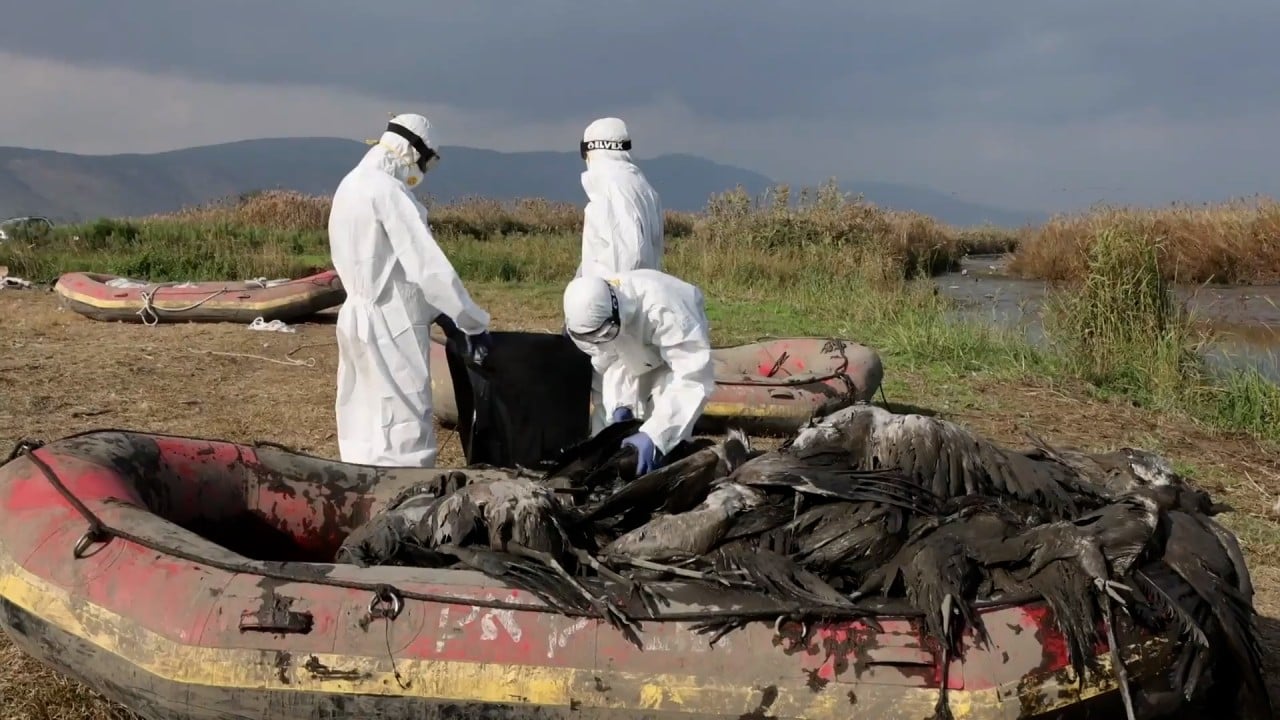
As bird flu spreads to mammals, WHO urges vigilance but no alarm
- The UN health body says the risk to humans is low ‘for the moment’, though the spillover to animals like foxes, sea lions and bears needs to be watched closely
- Tens of millions of birds have been culled worldwide amid severe outbreaks in Europe, North and South America
The World Health Organization called for vigilance after the recent detection of bird flu in mammals, but tried to calm fears that large-scale human outbreaks could be looming.
“The recent spillover to mammals needs to be monitored closely,” the UN health agency’s chief Tedros Adhanom Ghebreyesus told reporters on Wednesday, stressing that “for the moment, WHO assesses the risk to humans as low”.
Since late 2021, Europe has been gripped by its worst-ever outbreak of bird flu, with North and South America also experiencing severe outbreaks.
This has led to the culling of tens of millions of domestic poultry worldwide, many with the H5N1 strain of the virus. The global outbreak is also responsible for the deaths of tens of thousands of wild birds.
The recent detection of the disease in a number of mammals, including foxes, otters, minks, sea lions and even grizzly bears, has sparked growing concern that humans could be more at risk.
Tedros noted that since the virus first emerged in 1996, “We have only seen rare and non-sustained transmission of H5N1 to and between humans.” But, he cautioned, “We cannot assume that will remain the case, and we must prepare for any change in the status quo”.
Tedros called on countries to “strengthen surveillance in settings where humans, farmed or wild animals interact”.
“WHO is also continuing to engage with manufacturers to make sure that if needed, supplies of vaccines and antivirals would be available for global use,” he said.
Indian boy dies of bird flu in country’s first such case of human death
Over the last two decades, there have been 868 confirmed H5N1 cases in humans with 457 deaths, according to the WHO. There were four confirmed human cases and one death last year.
Last month, Ecuador reported South America’s first case of the A(H5) bird flu virus in a human – a nine-year-old girl who was in contact with backyard poultry.
The girl’s condition was “improving”, WHO emergencies director Michael Ryan told reporters, adding that so far, there was no indication that other people had been infected.
That reflects the usual pattern when people are infected, explained Sylvie Briand, WHO epidemic and pandemic preparedness and prevention director.
“The transmission from animals to humans is rare, and when it infects humans, further transmission between humans is not easy, because the virus is not well-adapted to the human population,” she said.
But, she warned: “We need to be vigilant to make sure that spread in animals is contained”.
“The more the virus circulates in animals, the higher is the risk for humans as well,” she said, adding that this was “because the virus circulating in animals can evolve to forms that are more transmissible”.
Boy in China becomes first recorded human case of H3N8 bird flu strain
Ryan agreed that intense spread among small mammals “creates the chance that this virus can evolve”.
But, he stressed: “Our job is to stay one step ahead.
“Protecting humans isn’t only about managing viruses in humans. It’s about managing viruses in the animal kingdom and especially at that animal-human interface,” he said, urging concerted action.
“Risks can be reduced. People should not be alarmed.”

.png?itok=arIb17P0)
